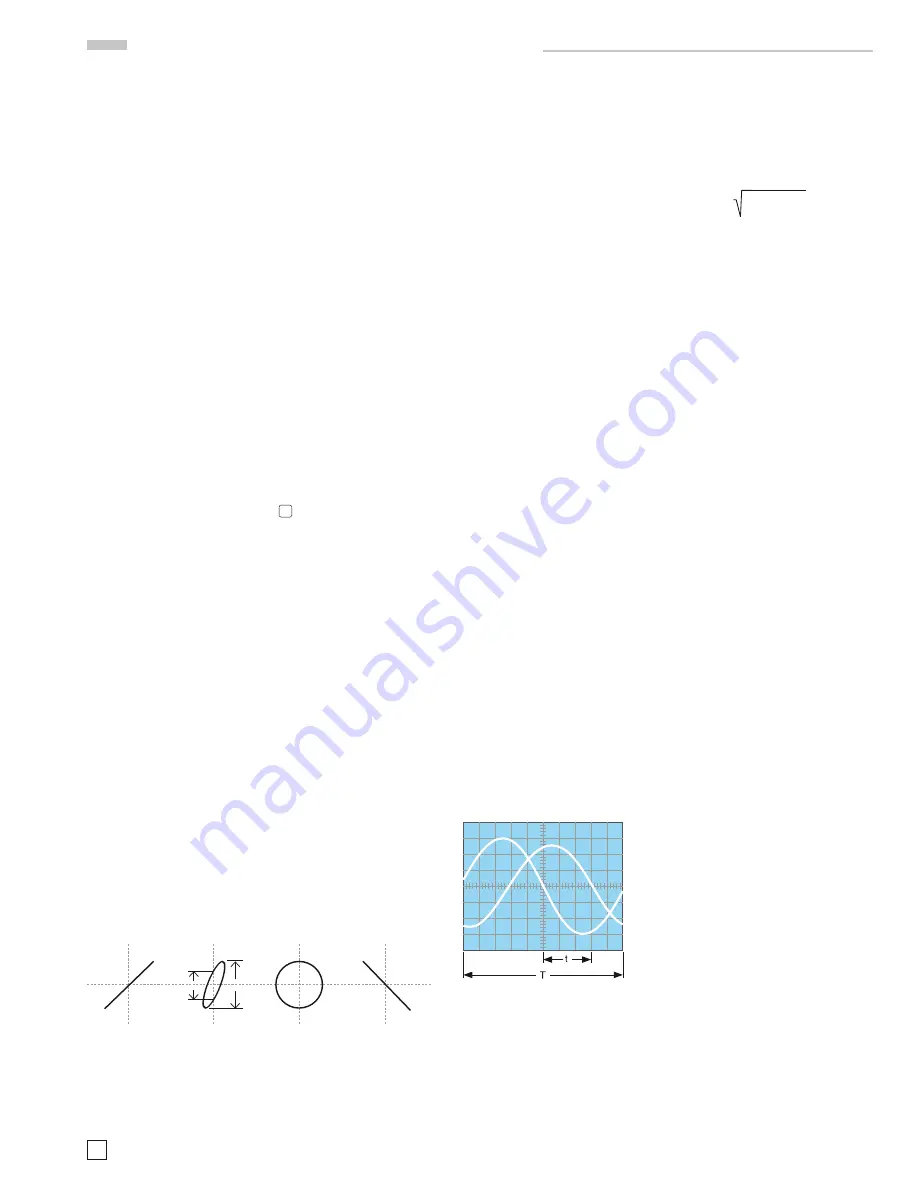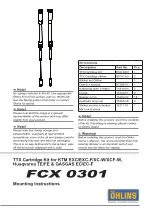
14
Subject to change without notice
they are within the permissible input signal range; this is the
case if they can be displayed in these modes. Only then switch
to ADD. If this precaution is disregarded grossly false displays
may result as the input range of one or both amplifi ers may
be exceeded.
Another precondition for obtaining true displays is the use of
two identical probes at both inputs. But note that normal probe
tolerances (percent) will cause the CM rejection to be expected
to be rather moderate. In order to obtain the best possible re-
sults proceed as follows: First adjust both probes as carefully
as possible, then select the same sensitivity at both inputs and
then connect both probes to the output of a pulse generator
with suffi cient amplitude to yield a good display. Readjust one
(!) of the probe adjustment capacitors for a minimum of over-
or undershoot. As there is no adjustment provided with which
the resistors can be matched a residual pulse signal will be
unavoidable.
When making difference measurements it is good practice
to fi rst connect the ground cables of the probes to the object
prior to connecting the probe tips. There may be high potentials
between the object and the scope. If a probe tip is connected
fi rst there is danger of overstressing the probe or/and the scope
inputs! Never perform difference measurements without both
probe ground cables connected.
XY operation
This mode is accessed by VERT/XY
32
>
XY. In analog mode the
time base will be turned off. The channel 1 signal will defl ect in X
direction (X-INP. = horizontal input), hence the input attenuators,
the variable and the POSITION 1 control will be operative. The
HORIZONTAL control will also remain functional.
Channel 2 will defl ect in Y direction.
The x10 magnifi er will be inoperative in XY mode. Please note the
differences in the Y and X bandwidths, the X amplifi er has a lower
–3 dB frequency than the Y amplifi er. Consequently the phase
difference between X and Y will increase with frequency.
In XY mode the X signal (CH1 = X-INP). can not be inverted.
The XY mode may generate Lissajous fi gures which simplify
some measuring tasks and make others possible:
– Comparison of two signals of different frequency or adjust-
ment of one frequency until it is equal to the other resp.
becomes synchronized.
– This is also possible for multiples or fractions of one of the
frequencies.
Phase measurements with Lissajous fi gures
The following pictures show two sine waves of equal amplitude
and frequency but differing phase.
0° 35° 90° 180°
a
b
Calculation of the phase angle between the X- and Y-signals (af-
ter reading a and b off the screen) is possible using the following
formulas and a pocket calculator with trigonometric functions.
This calculation is independent of the signal amplitudes:
Please note:
– As the trigonometric functions are periodic limit the calcu-
lation to angles
<
90 degrees. This is where this function is
most useful.
– Do not use too high frequencies,
because, as explained above, the
two amplifiers are not identical,
their phase difference increases
with frequency. The spec gives the
frequency at which the phase diffe-
rence will stay
<
3 degrees.
– The display will not show which of the two frequencies does
lead or lag. Use a CR combination in front of the input of the
frequency tested. As the input has a 1 MΩ resistor it will be
suffi cient to insert a suitable capacitor in series. If the ellipse
increases with the C compared to the C short-circuited the
test signal will lead and vice versa. This is only valid
<
90
degrees. Hence C should be large and just create a barely
visible change.
If in XY mode one or both signals disappear, only a line or a point
will appear, mostly very bright. In case of only a point there is
danger of phosphor burn, so turn the intensity down immedia-
tely; if only a line is shown the danger of burn will increase the
shorter the line is. Phosphor burn is permanent.
Measurement of phase differences in dual channel
Yt mode
Please note:
Do not use ”alternate trigger“ because the time
differences shown are arbitrary and depend only on the respec-
tive signal shapes! Make it a rule to use alternate trigger only
in rare special cases.
The best method of measuring time or phase differences is using
the dual channel Yt mode. Of course, only times may be read off
the screen, the phase must then be calculated as the frequency
is known. This is a much more accurate and convenient method
as the full bandwidth of the scope is used, and both amplifi ers
are almost identical. Trigger the time base from the signal
which shall be the reference. It is necessary to position both
traces without signal exactly on the graticule center (POSITION
1 and 2). The variables and trigger level controls may be used,
this will not infl uence the time difference measurement. For
best accuracy display only one period at high amplitude und
observe the zero crossings. One period equals 360 degrees. It
may be advantageous to use AC coupling if there is an offset
in the signals.
In this example t = 3 cm and T = 10 cm, the phase difference in
degrees will result from:
5
3
ϕ
° = —
·
360° = —
·
360° = 108°
T
10
or in angular units:
t 3
arc
ϕ
° = —
·
2
π
= —
·
2
π
= 1,885 rad
T
10
O p e r a t i n g m o d e s o f t h e v e r t i c a l a m p l i f i e r
t = horizontal spacing of the zero
transitions in div
T= horizontal spacing for one
period in div
a
sin
ϕ
= —
b
a
cos
ϕ
= 1 –
(
—
)
2
b
a
ϕ
= arc sin —
b















































